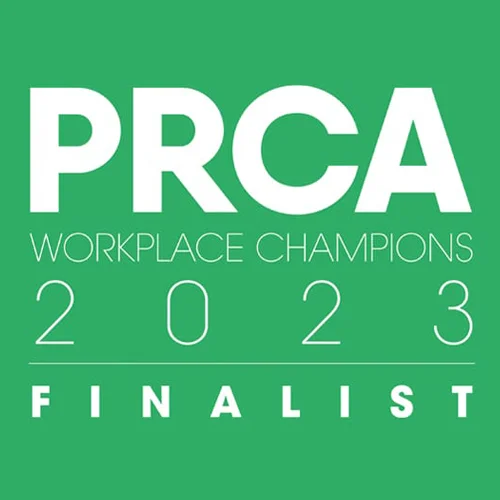Last week, CoreNet Global hosted a roundtable webinar to give leading corporate real estate (CRE) professionals the chance to debate and discuss their roles and responsibilities during the coronavirus outbreak. The session included best practice guidance and examined the likely impact on CRE moving forwards.
Cristina G. Banks, Ph.D., director at the University of California-Berkley’s Interdisciplinary Center for Healthy Workplaces at the University of California-Berkeley, led the discussion.
The four speakers were:
- Karen Ellzey, executive managing director, CBRE
- Steve Quick, chief rxecutive, global occupier services, Cushman & Wakefield
- Chris Zlocki, head of service excellence, occupier services – global, Colliers International
- Sundar Nagarajan, managing director & head of consulting, JLL Consulting
I joined the webinar and have recapped the main talking points.
What were the immediate areas of focus following the outbreak?
Chris: We looked at remote work and gave recommendations to companies not used to it via our workplace advisory team. Our APAC team launched a microsite and each region was able to contribute to it.
Karen: Very early on we had the mindset of being in this together with our clients. We received a deluge of client emails, so we started a knowledge management desk to respond quickly and consistently. It was important to be aligned with client needs, but to also bring CRE expertise to the table. We saw an opportunity to bring analytics to the table, such as predicting where the virus might spread, which allowed our clients to create contingency plans as soon as possible.
Steve: The initial reaction was the health and safety of building occupants. There was confusion at first about how to deal with a suspected case and what areas of the building required cleaning. The Centre for Disease Control has been a great reference. We needed to identify critical processes and critical people – what can and cannot occur at home? That helped us to identify who the critical people are. There was also the question of how you prove that someone is a key worker
Sundar: Everything happened so quickly that people were a bit paralysed at first. Our main goal was to align with client business continuity plans, but many hadn’t prepared for a crisis of this magnitude. No geographic element to the crisis meant clients couldn’t relocate. Natural disasters are finite, so you can plan a recovery, but not so with this. We advised clients to think about the short and long term versus employee impact – we need to make sure everyone is healthy. It’s important to take care of leadership as it’s vital they are available for business and morale. We also see this as a growth opportunity – not financially, but as people. We looked at how many people could work from home and created an assessment tool. Many people thought they were ready but had not planned for something of this scale. We gave clients a shortlist of immediate steps to take to continue business operations.
Now that you have seen how companies have responded, are there examples of things that were particularly effective? Can you share any tips?
Steve: Business continuity plans are great on the shelf and in testing but always different in real life, so it has been useful to adapt on the fly.
Chris: Communications have been heightened and are more frequent. There has also been growth on a personal level – tech has been bringing people together. At the enterprise level, constant comms has been really useful.
Sundar: The alignment with business continuity plans has been effective. Securing the supply chain has also been important. We created a workplace continuity checklist and allowed people to do a self-assessment. Clients wanted help with how to scale and how to plan for the next steps. It’s vital to have a reliable comms channel.
Karen: As much as we talk about working from home, there are numerous jobs that require on-site involvement. Our industry is asking thousands of people to be part of that critical infrastructure. We all need to take a moment to acknowledge the people still working on the front lines.
Is remote working as effective as being in the office?

Sundar: This has been a great experiment for remote working. One recent survey found that 58 per cent of people who work remotely feel they are as productive as in the office, and 36 per cent feel they are more productive. It will be interesting to see how these numbers change now that so many more are experiencing working from home. Moving forward, more systems and processes will be designed with remote workers in mind. Resilience of companies has been tested and remote working will add to resilience. We should not try to replicate the experience of working in the office when working remotely. There will be more tech investment as more people work from home. Productivity is for machines – the human job will be to be more creative and to solve problems.
What are the effective processes for cleaning facilities so that they are rid of the virus and people believe they are safe to work in?
Karen: Cleaning and janitorial teams have been thrown into the limelight. This shows the importance of working with cleaning partners and having a strong relationship. There needs to be engagement with landlords to ensure that all areas are cleaned including common areas and private workspaces.
What should be considered before buildings reopen?
Steve: There will be a heightened awareness around hygiene, food safety, HVAC and more. When the all-clear happens, FMs and CRE professionals will be the “first responders” to make sure people feel secure about going back to work and school.
How are you helping clients get back to commercial viability?
Karen: It’s not a one-size-fits-all approach. We’re seeing some clients experience a surge in demand, such as the healthcare sector. E-commerce is also surging to keep up with demand of home shopping. Other companies are in a healthy position as they are working in an essential sector, and they have the ability to weather the storm. They are making sure their supply chains stay intact. Tech and financial companies fall into this category. Thirdly, some companies who were already struggling are in peril, so they are very focused on cost savings and looking at bold solutions to get by.
Chris: We need to do scenario planning to go through different options and make plans. Social distancing will become the new norm, so this could impact common spaces. We’ll need to rethink how we consider space strategies. This will demonstrate the power of real estate in that it is influential in guiding the future of the enterprise.
Steve: The basics are making sure people feel safe and healthy. The variability of economic situation by industry is huge. One of the big questions is duration – there is concern it could go on for a long time, and it’s hard to plan effectively without a date.
Will remote working change the value of real estate, or is there an opportunity to capitalise by creating new value?
Sundar: We have the skills, abilities, people and global reach to get businesses back to commercial viability. CRE leaders should solve business problems with their expertise and can be more involved at the C-suite level.
Steve: We’ll see numerous new policies from HR about sick leave, sick pay, etc. Working from home has put a strain on IT, so we’ll see more collaboration between real estate, IT, HR and other departments.
Karen: We’re at the cusp of a grand reckoning on the role of the physical and virtual workplace. We’re seeing early indications from Asia that people are eager to get back into the work environment – that will have to be handled delicately.
Chris: This is a great opportunity to measure productivity in a meaningful way. It’s always been a challenge to measure real estate impact on productivity.
The roundtable raised a lot of valid talking points, and it’s clear that CRE professionals have a big part to play in how the coronavirus impact is handled now and in the future.
What points stand out to you and what do you think about the role CRE has to play? Leave a comment below or tweet us @magentacomms.









